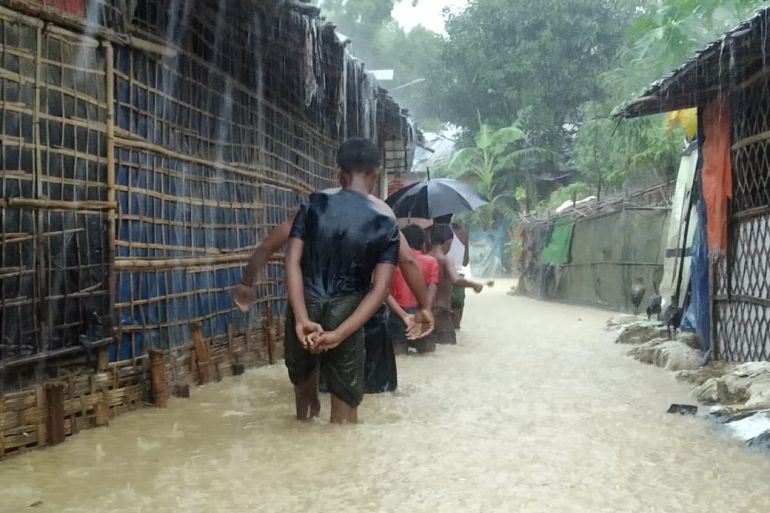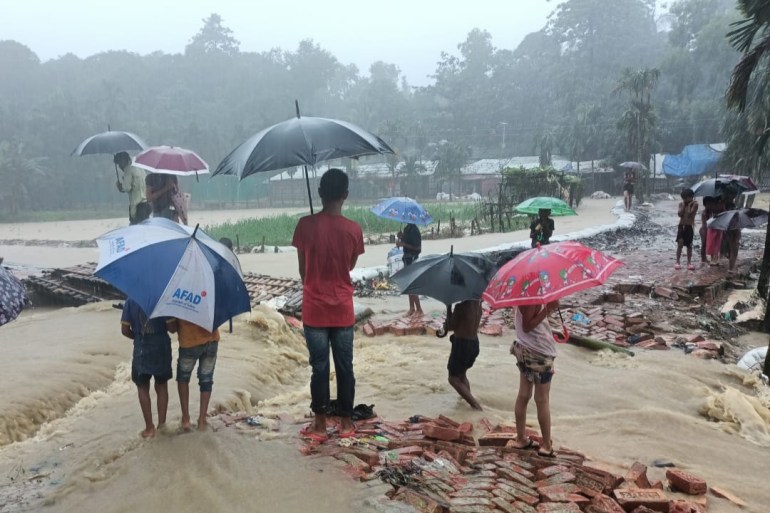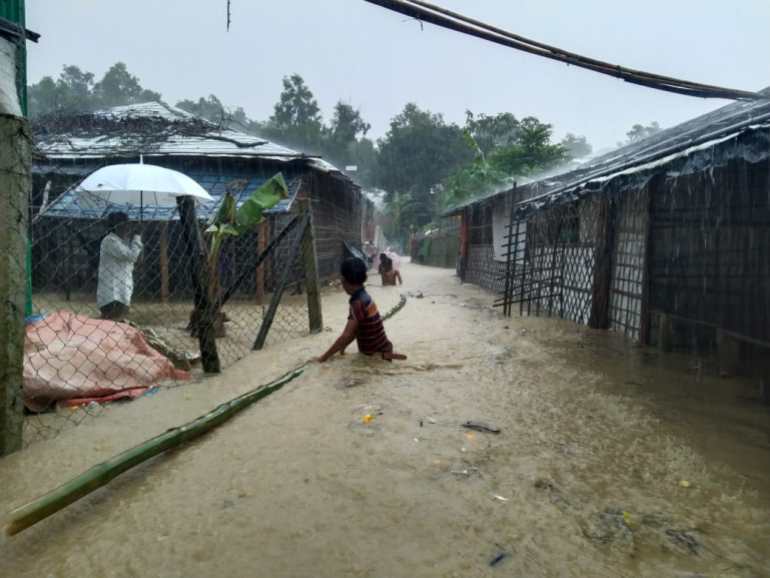Deadly landslides, flooding hit Rohingya camps in Bangladesh
Thousands of refugees relocated after monsoon rains trigger landslides and flash floods in the refugee camps in Cox’s Bazar.

At least six Rohingya died on Tuesday and thousands have been relocated in refugee camps in Bangladesh’s southeast after monsoon rains triggered landslides and flash floods in the hilly settlements, officials said.
Five Rohingya, including three children, were buried and killed after part of a hill crushed their bamboo-and-tarpaulin shanties in Balukhali camp, refugee commissioner Shah Rezwan Hayat said.
Keep reading
list of 4 itemsBangladesh plans to vaccinate Rohingya against COVID: Official
Rohingya refugees struggle for vaccine in COVID-hit India
Diarrhoea kills at least 4 Rohingya on remote Bangladesh island
“Days of heavy rains caused the landslides,” he told AFP news agency.
Another Rohingya child died after he drowned in a stream in the nearby Palong Khali refugee camp, the official said, adding that all streams in the camps were raging due to flash floods.
Rohingya condition in Bangladesh refugee camp 😭@Cycycy2021 @poppymcp @MayWongCNA @UNHCR_BGD @RapporteurUn @YangheeLeeSKKU @ pic.twitter.com/im4fHBe7hI
— DRFS, Rohingya base Org (@MJubair14) July 27, 2021
“We also have rescued two injured people and sent them to hospitals,” he told AFP, adding thousands of Rohingya families had been relocated within the camps to keep them safe.
Rohingya refugees mostly live in shacks made of bamboo and plastic sheets that cling to steep, bare hills, and flooding has further worsened their living conditions.
“Monsoons and landslides are making our situation even more precarious,” Rohingya refugee, Mohammad Ismail, told Reuters news agency.

The Bangladesh weather office said it expected heavy rains to continue for the next few days.
Last month two refugees were killed in separate landslides during heavy rain.
Some 740,000 Rohingya fled their Rakhine state homes in August 2017, escaping a clampdown by Myanmar security forces. UN investigators have concluded the operation was executed with “genocidal intent”.
Precarious situation
Thousands of these refugee families, especially those who live in the valleys within the 7,000-acre (2,832-hectare) settlements, remain at high risk of landslides every year during the monsoon.
Over the past several months, Bangladesh has shifted 18,000 refugees to the low-lying Bhashan Char island from cramped settlements on the mainland.

But many of those relocated say they were coerced, and that health and other facilities on the silt island, in an area frequently hit by deadly cyclones, are poor.
Bangladesh has rejected allegations that Rohingya have been relocated forcibly and says conditions on the island are much better than on the mainland.
However, last month a Human Rights Watch report said refugees feared they will be exposed to terrible conditions during the monsoon season, and are struggling with “inadequate” health and education facilities.
In June, Bangladesh officials said they had contained a diarrhoea outbreak that killed at least four Rohingya refugees and infected 1,500 others.
Authorities plan to eventually move 100,000 of them to Bhashan Char.